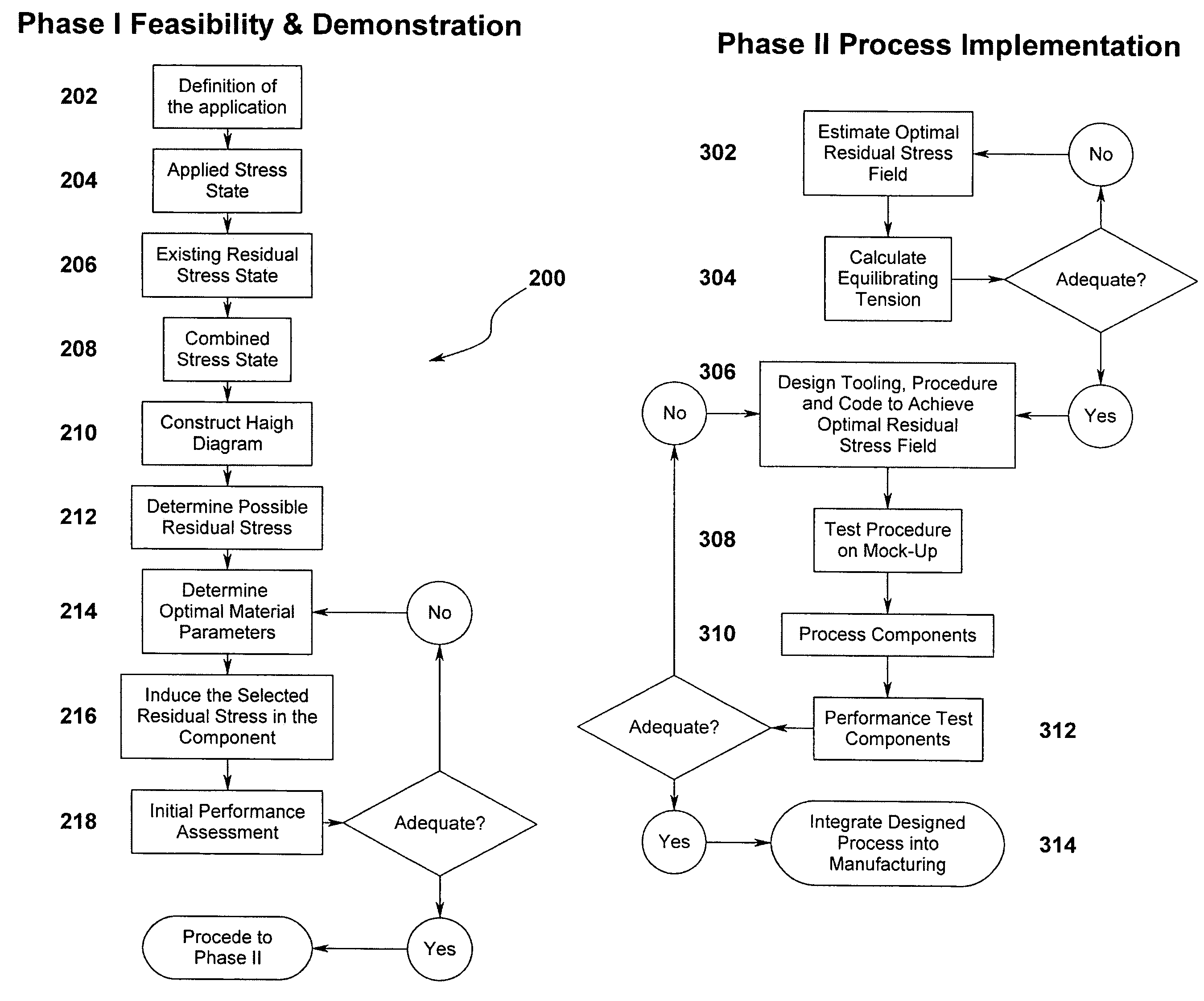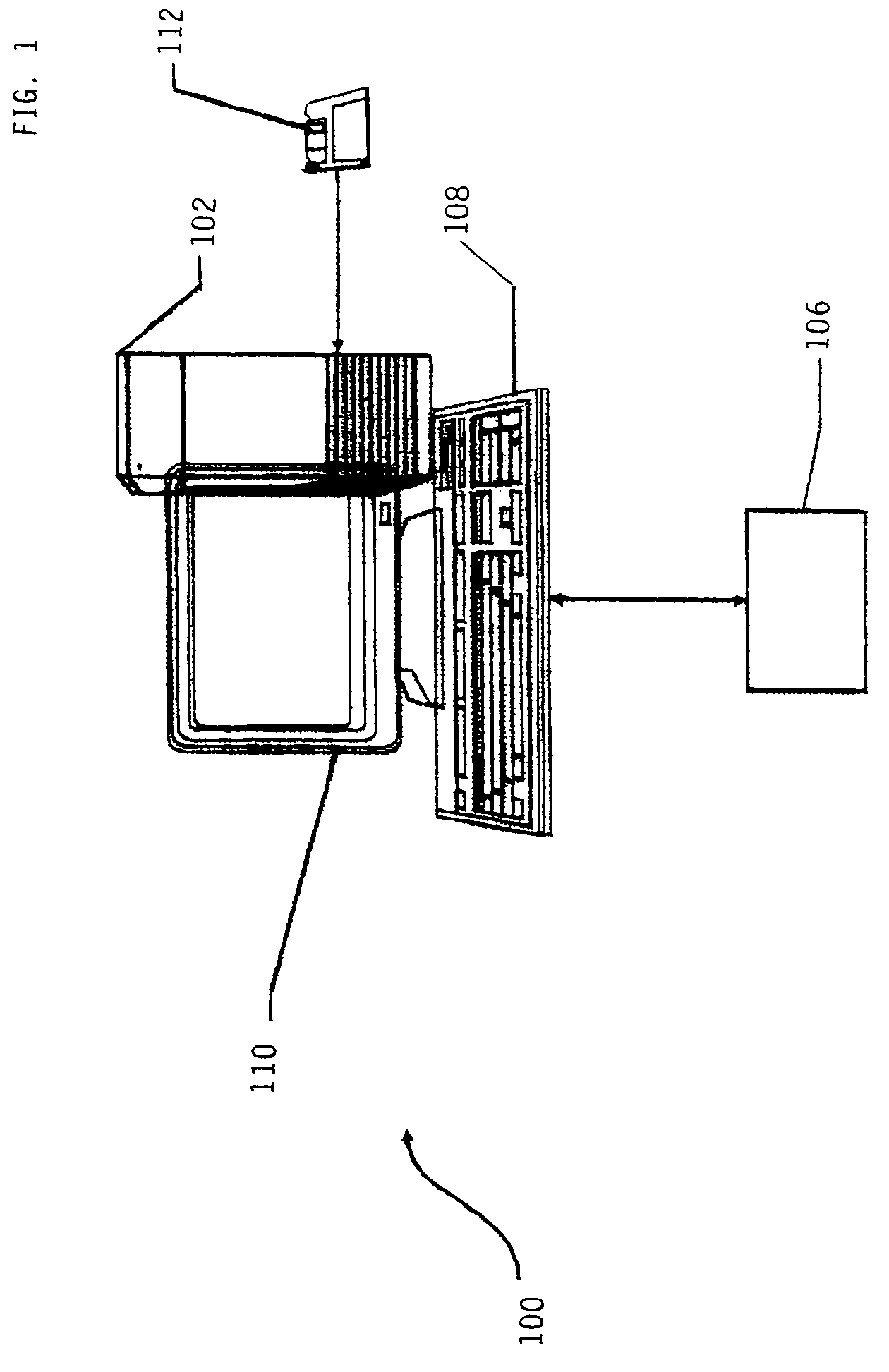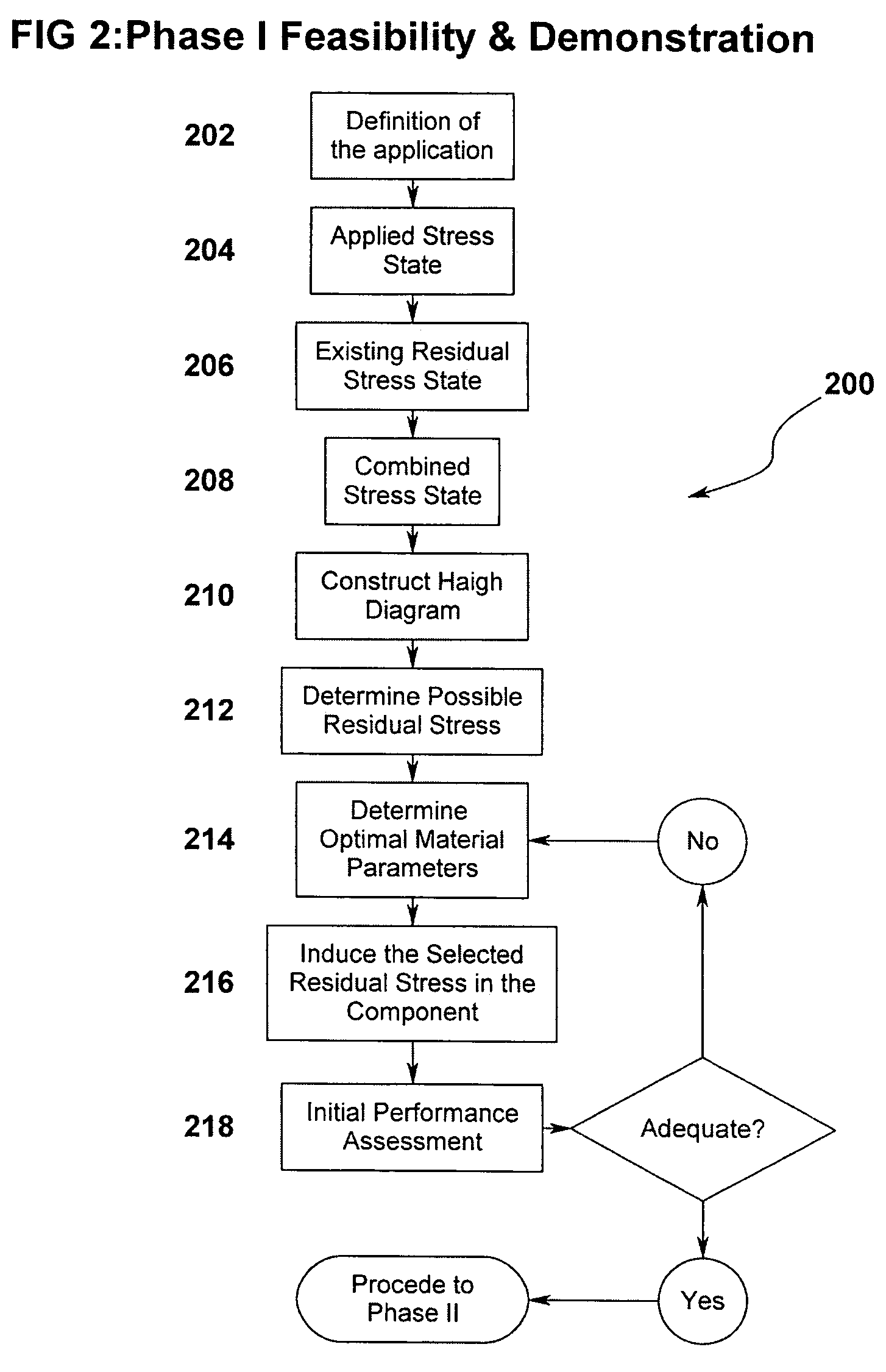Method and system for improving a part's resistance to stress induced failure
a technology of stress induced failure and a system, applied in the direction of mechanical means, analogue processes for specific applications, instruments, etc., can solve the problems of affecting fatigue and stress corrosion cracking failure, traditional design techniques do not take into account residual stresses developed in parts during manufacturing, and parts may fail prematurely
- Summary
- Abstract
- Description
- Claims
- Application Information
AI Technical Summary
Benefits of technology
Problems solved by technology
Method used
Image
Examples
Embodiment Construction
[0032]The present invention is a method and system for improving a part's resistance to stress induced failure by optimizing the residual stresses in a part, preferably as a parameter in the design of a part. In describing the preferred embodiments of the invention illustrated in the drawings, specific terminology will be resorted to for the sake of clarity. However, the invention is not intended to be limited to the specific terms so selected, and it is to be understood that each specific term includes all technical equivalents that operate in a similar manner to accomplish a similar purpose.
[0033]Referring to FIG. 1, a preferred embodiment of the system for improving a part's resistance to stress induced failure utilizes a computer system 100 used to implement the system software 200 (FIG. 2) for performing the method of improving a part's resistance to stress induced failure. The computer system 100 comprises a processor and a memory 102 that may be coupled to other devices, such...
PUM
 Login to View More
Login to View More Abstract
Description
Claims
Application Information
 Login to View More
Login to View More - R&D
- Intellectual Property
- Life Sciences
- Materials
- Tech Scout
- Unparalleled Data Quality
- Higher Quality Content
- 60% Fewer Hallucinations
Browse by: Latest US Patents, China's latest patents, Technical Efficacy Thesaurus, Application Domain, Technology Topic, Popular Technical Reports.
© 2025 PatSnap. All rights reserved.Legal|Privacy policy|Modern Slavery Act Transparency Statement|Sitemap|About US| Contact US: help@patsnap.com



